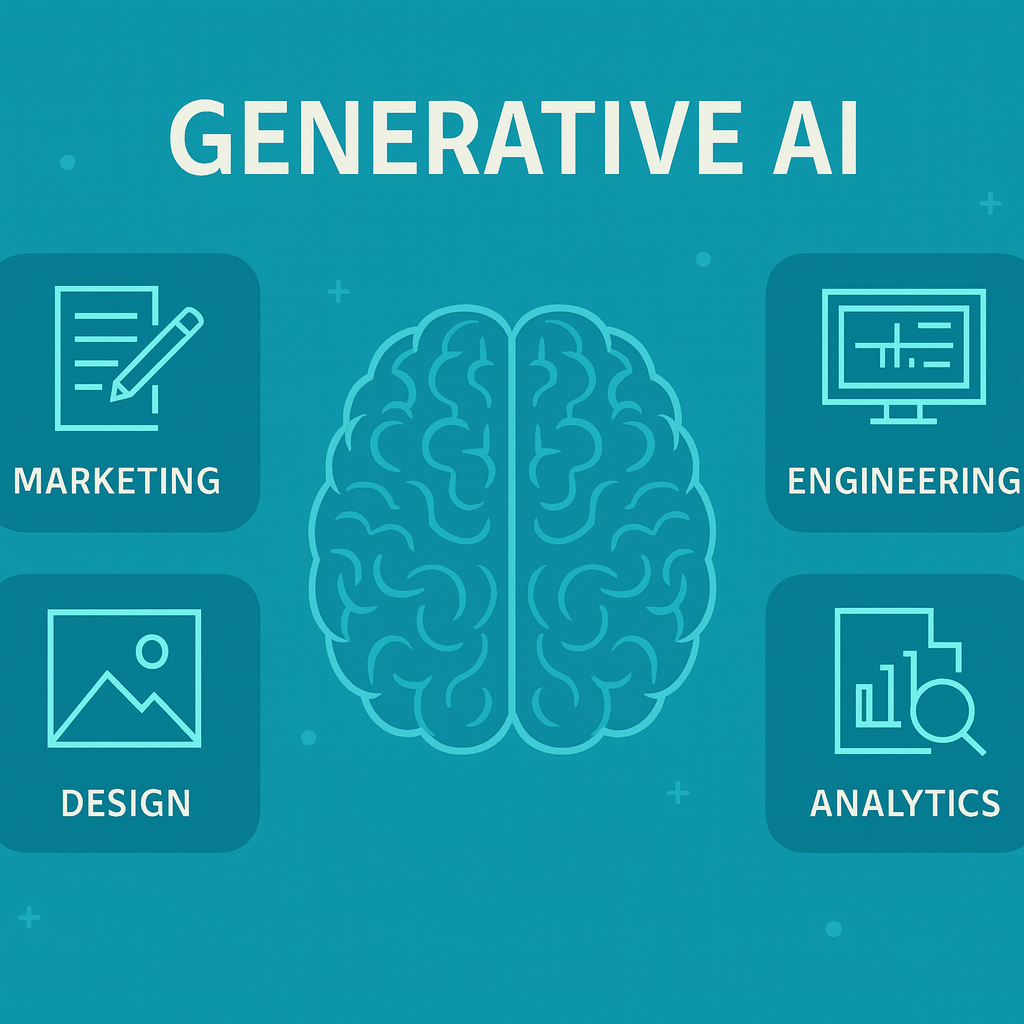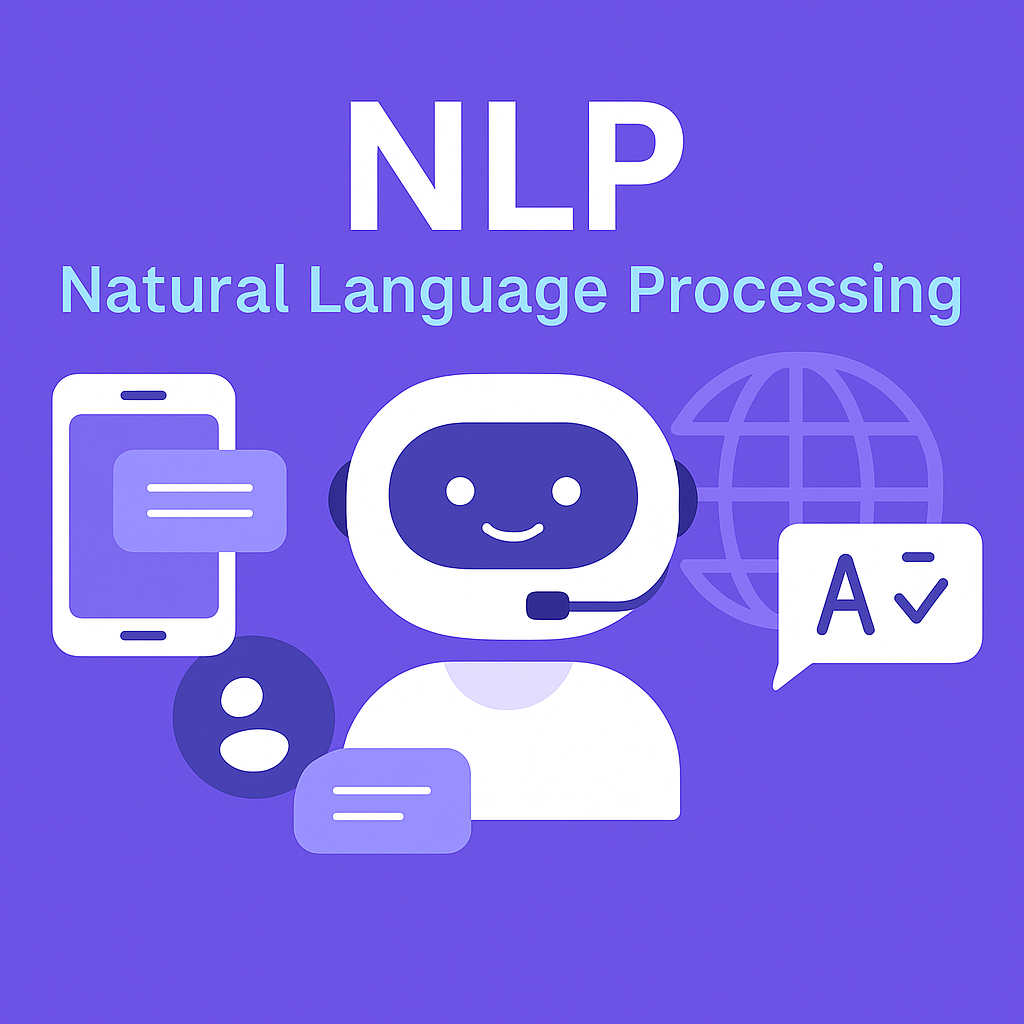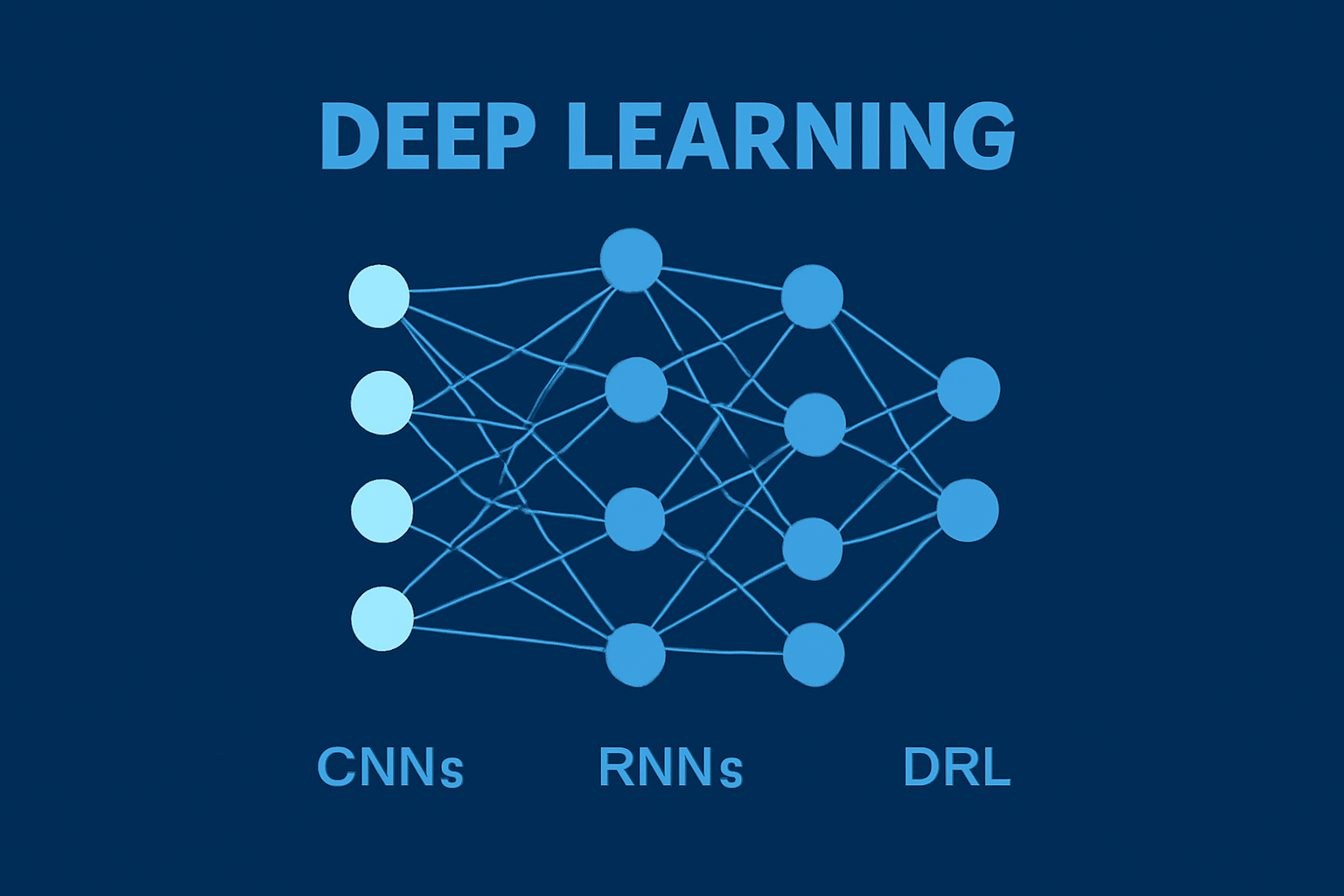- Generative AI drives creativity, NLP boosts communication, and Machine Learning optimizes decision-making.
- AI handles repetitive tasks and generates insights, while human judgment guides decisions ethically.
- Diverse, high-quality data ensures accurate AI insights for smarter business choices.
The AI Ecosystem Explained: Smarter Choices for a Smarter Future

The AI Ecosystem Explained: Smarter Choices for a Smarter Future
Artificial intelligence isn’t just the future, it's already part of how we work, shop, and make decisions every day. From the emails you get recommended to the products you saw online last night, AI quietly shapes modern business behind the scenes.
But here’s the challenge: with so many models and tools out there, it’s easy to get lost in the buzz. Machine Learning. Deep Learning. NLP. Generative AI. Each one sounds promising yet they all solve very different problems.
But the ultimate truth is, AI isn’t one size fits all.
So, you have to select the best one. The right model can transform your workflow, save hours, and uncover insights you didn’t know existed. The wrong one can waste time, data, and budget.
That’s why this guide simplifies the AI ecosystem into clear, business-friendly insights.
You’ll learn:
- What each AI subset actually does
- Where it fits best in real-world business cases
- And how data drives everything behind the scenes
So, if you’ve been wondering which AI model truly fits your business goals, you’re in the right place. Let’s decode the ecosystem and make smarter choices for a smarter future.
Exploring AI Subsets: How Different AI Models Help Businesses Work Smarter
Implementing AI is easier when you have the right experts by your side—people who know how to simplify the complex and turn ideas into real results.
Now, let’s explore the core AI subsets and see how they align with your business goals.
Generative AI—Creativity That Works Smarter
Generative AI gives something new—the ability to create.
It doesn’t just analyze data; it imagines possibilities. From writing and design to software code and marketing content, Generative AI transforms how teams brainstorm, build, and bring ideas to life.
Unlike traditional automation that repeats past patterns, Generative AI learns from them to produce something new—text, images, code, videos, and even strategic business concepts.
It’s not here to replace human creativity, but to scale it.
How Businesses Are Using Generative AI in 2025
Generative AI has quietly moved from hype to habit.
It’s helping teams across industries speed up production, reduce costs, and free time for high-value work.
- Marketing teams use it to create campaign copy, social captions, and product descriptions in seconds.
- Software engineers generate clean code snippets or document large systems faster.
- Designers prototype visuals, 3D assets, and motion concepts in half the usual time.
- Enterprise and legal teams summarize reports, review contracts, and surface hidden insights instantly.
Recent research backs the shift.
- A 2025 McKinsey survey found that 78% of organizations now use AI in at least one business function—showing how deeply it’s integrated into daily operations.
- According to Sequencr’s 2025 Generative AI Trends, global GenAI spending is projected to reach $644 billion this year, up more than 76 percent from 2024.
- A Bain survey reports that in the U.S., 95% of companies now use generative AI, up 12 percentage points in just one year.
The Secret to Success, Human & AI Collaboration
The best results come when humans and AI work together. Here is the secret way to hit vision.
1. AI can draft, generate, and suggest—but it’s human judgment that gives the output meaning, tone, and purpose.
2. Use AI to handle volume and repetition; rely on people for vision, ethics, and emotional intelligence.
3. That collaboration keeps creativity authentic while multiplying speed and precision.
4. It’s not automation replacing people—it’s augmentation empowering them.
Challenges to Watch & How to Handle Them
Generative AI is powerful, but it needs proper direction.
- Hallucinations
Sometimes AI “makes up” information that sounds right but isn’t.
→ Fix: Validate facts, train models with domain-specific data, and always review before publishing. - Ethical misuse & deepfakes
Realistic fake media can harm trust.
→ Fix: Establish internal AI usage policies, apply content-authenticity tools, and train staff on responsible AI. - Data & privacy risks
Sensitive information fed into public models can expose companies.
→ Fix: Use private or fine-tuned models, anonymize data, and follow strong compliance frameworks.
Building with responsibility today protects your credibility tomorrow.
The Business Advantage
- Faster content cycles: From concept to campaign within minutes.
- Lower creative costs: Scale production without scaling headcount.
- Consistent output: Maintain brand tone across thousands of assets.
- Innovation at scale: Let teams focus on strategy while AI handles execution.
But the brutal truth is, Generative AI isn’t about replacing creativity—it’s about amplifying.
With the right guidance and data, it turns every idea into an opportunity to move faster, think bigger, and deliver smarter.

Natural Language Processing (NLP) Teaching Machines to Understand Human Language
Natural Language Processing (NLP) is the technology that allows machines to understand, interpret, and generate human language, whether it’s text or speech.
Think of it as the backbone of any system that interacts with customers or handles communication. It powers everything from chatbots and email sorting tools to language translation systems and sentiment analysis.
With NLP, AI can engage in real-time, human-like conversations, helping businesses respond faster and more accurately to their audience.
Where NLP is Making a Real Difference in Business
NLP is no longer a futuristic technology—it’s transforming how businesses communicate, understand, and connect with customers.
Here’s how it’s making waves in different industries:
- Customer Service: NLP-powered chatbots can instantly answer customer queries, process orders, and resolve issues 24/7. This reduces the burden on customer service teams and improves response time.
- E-commerce: NLP sorts and categorizes customer reviews to detect emerging trends, identify product issues, and highlight customer sentiment. This leads to better product management and customer satisfaction.
- Marketing: NLP tools automate content generation and personalize messaging based on customer behavior, making marketing efforts more relevant and impactful.
- Healthcare: NLP helps extract meaningful information from patient records, research papers, and medical documents, accelerating diagnostics and improving patient care.
- Finance: NLP automates tasks like transaction categorization, fraud detection, and compliance reporting, enabling finance teams to work smarter and more efficiently.
According to Gartner’s 2025 forecast, 71% of enterprises will use NLP to streamline customer service and operational processes within the next two years.
How NLP Models Work & Why They Matter
NLP isn’t just a single model—it’s a collection of algorithms that work together to interpret and process language. Here’s a quick breakdown of the most common NLP models businesses are using today:
- N-gram Models: These predict the next word based on previous words, using probabilities derived from massive datasets. For example, when typing “return pol…,” an NLP model might suggest “return policy,” helping users complete sentences and reducing errors in text input.
- Neural Network Models: These recognize patterns in large volumes of text. They are perfect for sentiment analysis and customer feedback analysis, allowing businesses to understand how people feel about their brand, products, or services.
- Transformers & Large Language Models (LLMs): Models like GPT-4 and BERT are revolutionizing NLP by understanding context and generating more human-like responses. These models are used for tasks like crafting marketing content, summarizing reports, or even generating email replies.
NLP models aren’t just good to have tools—they are essential for businesses looking to improve their customer experience, streamline operations, and boost engagement.
Challenges to Consider And How to Overcome Them
While NLP has incredible potential, it does come with its own set of challenges. Here’s what businesses should be aware of:
- Ambiguity in Language:
Human language is complex—words can have multiple meanings depending on the context. For example, the word “bank” could refer to a financial institution or the side of a river.
Solution: Train your NLP models with industry-specific data to improve accuracy and context recognition. The more relevant data you provide, the better the results. - Data Quality:
Poor data leads to poor NLP outcomes. If models are trained on incomplete or biased datasets, the results will be inaccurate and potentially harmful.
Solution: Regularly clean, update, and audit your datasets. Invest in diverse, high-quality data sources to avoid skewed results and improve model fairness. - Multilingual Barriers:
NLP can struggle with languages that have multiple dialects or are less common. The richness of human language makes it harder for models to understand regional nuances and cultural differences.
Solution: Use pre-trained multilingual models or invest in local language datasets. By including culturally aware data, you can make your models more inclusive and effective in global markets.
The Business Benefits of NLP
- Enhances customer experience: With instant responses and personalized interactions, NLP-powered tools can drastically improve customer satisfaction and loyalty.
- Streamlines operations: Automate repetitive tasks like data entry, document classification, and customer service inquiries, freeing up valuable human resources for higher-level tasks.
- Drives insights: NLP can quickly process large volumes of text, turning customer feedback and market data into actionable insights, enabling data-driven decision-making.
NLP isn’t just about making sense of language—it’s about making sense of the data behind that language, empowering businesses to act smarter, faster, and more efficiently.

Deep Learning (DL) Machines That See, Hear, and Learn Like Humans
Deep Learning is the most advanced form of machine learning. It mimics the neural networks in the human brain, using layers of “artificial neurons” to process information, recognize patterns, and make decisions.
It’s what allows machines to understand complex data like images, videos, speech, and even unstructured data. With Deep Learning, AI can go beyond simple tasks like answering questions or classifying text, enabling it to recognize patterns and make decisions—just like humans.
How Deep Learning Is Changing Business
Deep learning is no longer a niche technology; it’s used in real-world applications across industries, driving innovation and smarter decision-making.
- Healthcare: Deep learning models are transforming diagnostics by analyzing medical imaging to detect diseases like cancer, speeding up diagnosis and improving accuracy.
- Retail: Deep learning helps retailers understand customer behavior by analyzing purchase patterns and social media interactions, leading to better product recommendations and personalized ads.
- Finance: In finance, deep learning is used for fraud detection and market trend analysis, where it can process vast amounts of data faster than traditional systems.
- Autonomous Vehicles: Self-driving cars rely on deep learning to process sensor data, visual cues, and environmental factors, allowing them to drive autonomously.
How Deep Learning Models Work
Deep learning models operate through layers of neurons (called artificial neural networks), where each layer extracts different features of data. Here’s a breakdown:
- Convolutional Neural Networks (CNNs): These models specialize in visual data, making them ideal for tasks like image recognition and video analysis. CNNs are used in industries like healthcare (for analyzing X-rays or MRIs) and automotive (for self-driving car vision systems).
- Recurrent Neural Networks (RNNs): These models work well with sequential data, such as time-series data, text, or speech. They are used in natural language applications, like speech recognition and language translation.
- Deep Reinforcement Learning (DRL): DRL models learn by trial and error, making them ideal for optimizing processes like robotic control, game AI, and supply chain logistics.
Each of these models brings unique strengths to the table, and businesses are increasingly turning to deep learning to tackle complex, high-value problems that were previously out of reach for traditional algorithms.
Challenges to Consider & How to Overcome Them
Despite its power, deep learning still faces several barriers. Here’s how businesses can address them:
- Data Quality & Quantity: Deep learning models need massive amounts of data to train effectively. Without enough diverse and clean data, models may struggle to make accurate predictions.
Solution: Collect diverse datasets from various sources to ensure the model learns the right patterns. Regularly audit and clean data to eliminate noise and bias. - Computational Power: Training deep learning models requires high computational resources. Small businesses may struggle with the costs and time associated with training large-scale models.
Solution: Cloud-based AI solutions offer businesses access to powerful infrastructure on demand. Companies can scale their models without the upfront costs of owning expensive hardware. - Interpretability: Deep learning models often operate as “black boxes,” where the decision-making process is not easily explainable.
Solution: Tools like SHAP (Shapley Additive Explanations) help explain the output of deep learning models, making them more transparent and trustworthy for businesses and customers alike.
The Business Impact of Deep Learning
Deep learning isn’t just about predicting the future or recognizing objects; it’s about unlocking efficiencies, improving outcomes, and enabling next-level decision-making.
Here’s how it impacts businesses:
- Faster insights: Deep learning helps businesses process complex data (images, video, voice) and turn it into actionable insights in real-time.
- Smarter automation: By automating decision-making and optimizing workflows, deep learning enables businesses to improve speed, accuracy, and efficiency across operations.
- Innovative products: From personalized experiences to autonomous systems, deep learning allows companies to create innovative products that weren’t possible before.

Machine Learning (ML) Unlocking Data to Drive Smarter Business Decisions
Machine Learning (ML) is a core subset of AI that enables systems to learn from data and make decisions without explicit programming.
Unlike deep learning, which uses complex neural networks, machine learning relies on simpler algorithms, like linear regression and decision trees, to identify patterns and make predictions.
ML models are used to optimize operations, reduce costs, and uncover actionable insights that lead to smarter decision-making.
It’s the perfect tool for businesses looking to leverage their data for competitive advantage.
Real-World Applications of Machine Learning
Here’s how businesses across industries are putting machine learning models to work to improve performance and boost efficiency:
- Fitness Apps: A subscription-based fitness app can analyze user behavior—like workout frequency, goal completions, and cancellations—to predict churn and offer personalized incentives to retain users.
- Retail: A retailer can use machine learning to predict demand, optimize inventory, and ensure that popular items are always in stock, while minimizing overstock.
- Financial Services: ML models are essential for fraud detection, where they analyze transaction data in real-time to spot unusual patterns and flag potential risks.
- E-commerce: Machine learning is used to personalize product recommendations, improving customer experience and driving sales.
According to Gartner’s 2025 AI Trends, 80% of global businesses are using machine learning to increase operational efficiency and drive personalized customer experiences.
Key Types of Machine Learning Models
There are different types of machine learning models, each designed to tackle specific problems. Let’s break them down:
- Supervised Learning:
In supervised learning, the model is trained on labeled data, meaning the outcomes are already known. The algorithm learns to map input data to the correct output.
For Example, a clothing retailer uses historical data to predict seasonal sales, ensuring they have the right stock at the right time. - Unsupervised Learning:
This approach is used when the data is unlabeled, meaning there’s no predefined outcome. The model identifies patterns or clusters within the data.
For Example, A grocery delivery service groups customers based on their purchasing behavior, enabling them to offer targeted promotions to different customer segments. - Semi-Supervised Learning:
This method combines both labeled and unlabeled data to train the model. It’s ideal when only a portion of the data is labeled.
For Example, in healthcare, semi-supervised learning is used to classify medical images for disease detection, even when only some of the images are labeled by medical professionals. - Reinforcement Learning:
In this model, an agent learns through trial and error, receiving feedback (rewards or penalties) for its actions. It’s great for tasks that require continuous optimization.
For Example, a logistics company uses reinforcement learning to optimize delivery routes, rewarding the model for the fastest, most efficient paths.
Challenges and How to Tackle Them
While machine learning has a lot of potential, businesses must be aware of its challenges and know how to mitigate them to get the best results:
- Scaling Up:
As a business grows, the volume and complexity of data increase, and models need to scale. Machine learning models need constant retraining to maintain accuracy.
Solution: Implement automated monitoring and model retraining tools to ensure models stay up-to-date as your data grows. - Data Quality:
Inaccurate, incomplete, or biased data leads to faulty predictions and unreliable insights.
Solution: Continuously audit and cleanse your data to ensure it’s relevant, diverse, and accurate. Implement robust data validation processes to improve model reliability. - Ethics vs. ROI:
In some cases, machine learning models can unintentionally reinforce biases, leading to unfair outcomes or discrimination.
Solution: Audit models regularly for fairness, ensure transparency in decision-making, and build ethical guidelines into your AI systems to build trust and credibility.
Business Benefits of Machine Learning
Machine learning isn’t just about predicting the future—it’s about optimizing processes, driving smarter decisions, and improving outcomes. Here’s how ML adds value to your business:
- Increased Efficiency: ML automates tasks that were once time-consuming, like customer classification, inventory tracking, and fraud detection, freeing up valuable resources for high-value work.
- Personalization at Scale: Whether it’s product recommendations or personalized marketing messages, ML models help businesses offer hyper-personalized experiences to customers, driving better engagement and conversions.
- Cost Savings: By predicting demand, optimizing supply chains, and automating processes, ML helps businesses reduce operational costs and increase profit margins.
- Improved Decision-Making: With real-time insights, predictive analytics, and data-driven recommendations, ML models enable businesses to make smarter decisions faster.
Data: The Core of AI Excellence
High-quality data is the foundation of any effective AI model. While volume matters, the true value lies in accuracy, relevance, and diversity. If your data isn’t representative of the real world, the insights and decisions made by your model will be flawed.
For example, training a weather prediction model with irrelevant data, like social media trends, would result in unreliable forecasts.
The key to success lies in balancing diverse data types—text, images, and more. This reduces biases and ensures that your AI can adapt to different situations.
External factors, such as market trends or competitor pricing, can significantly improve model predictions. For example, a retail chain can better predict sales trends by integrating factors like weather patterns or economic shifts, helping businesses react faster to changes in the environment.
Finding the Best AI Solution for Your Needs
Each AI model has its own strengths. Here’s how to choose the one that fits your business needs:
- Generative AI is ideal for content creation—think ad copy, articles, and design ideas.
- NLP shines when businesses need to understand and process human language, such as in chatbots or customer service automation.
- Deep Learning is designed for complex pattern recognition, making it invaluable for tasks like image analysis or automated driving.
- Machine Learning excels in predictive analytics—like forecasting sales trends or segmenting customers based on behavior.
The common denominator across all models? High-quality data. Clean, relevant, and diverse datasets ensure that your AI models deliver accurate and actionable results.
Pair great data with a talented AI team, and your business can unlock smarter decisions and sustainable growth through AI.

Featureblogs
Relatedblogs
Authorblogs
Get the best of our content straight to your inbox!
By submitting, you agree to our privacy policy.


